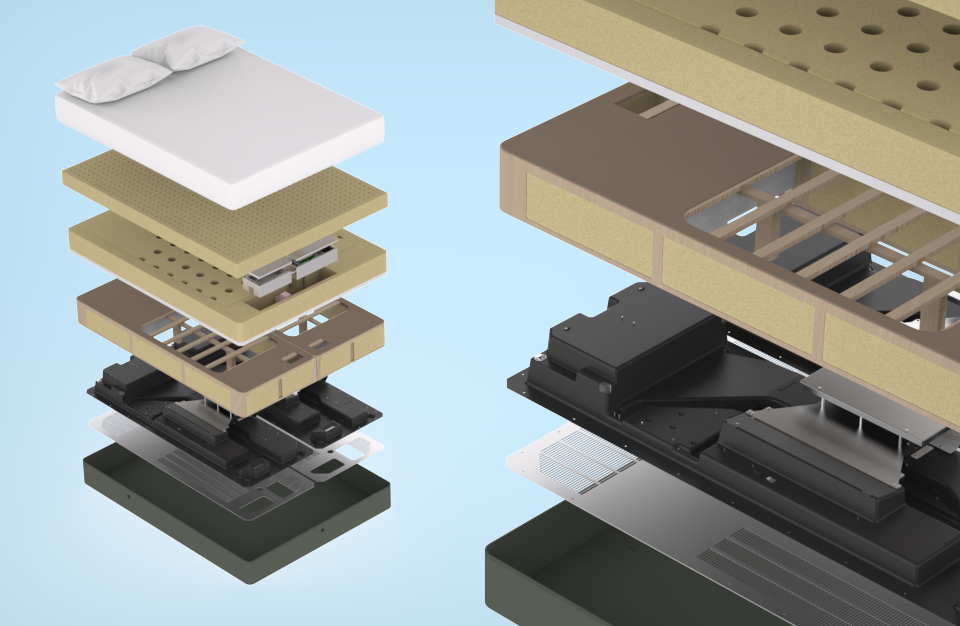
Sleep scientists agree that restorative sleep—sleep that provides the full range of physical, emotional, and mental repair necessary for maximum well-being—requires 4-6 cycles of light sleep, deep sleep, and REM sleep. The benefits of good sleep can be truly transformative, and even life-changing. But as anyone who has ever tossed and turned and struggled to sleep knows too well, getting restorative sleep is sometimes easier said than done.
Bryte wanted to design a revolutionary new sleep solution that would regulate a sleeper’s temperature and maintain it at the optimal level for each stage of sleep by blowing air across a thermo-electric heater or chiller to adjust the sleeper’s temperature. Named the Restorative Bed™, it would be the first product of its kind to offer a “science-based, purpose-built sleep experience” through technology. Bryte reached out to Daedalus to design and prototype the heating and cooling elements housed in the box springs and to select electronic and pump components for the adjustable-feel mattress that would be quiet enough to help ensure a peaceful night of sleep. In a joint effort between our electrical and mechanical engineering teams, we designed prototypes that utilized quieter components, that met all necessary safety regulations, and that were capable of meeting Bryte’s desired temperature range specifications. The product launched in select hotels beginning in 2020. Their newest model, which focuses on the adjustable surface, is rolling out in 2023. And if you’re interested in seeing a user’s response to using the Bryte Bed for the first time, check out these before and after videos, or this Popular Science article. The adaptive technology of the bed actually goes beyond simply automatically adjusting the temperature based on real-time biofeedback—the design would test, adapt, and apply adjustments over time in order to anticipate the optimal temperature regulation needed for each sleeper’s maximum benefit.